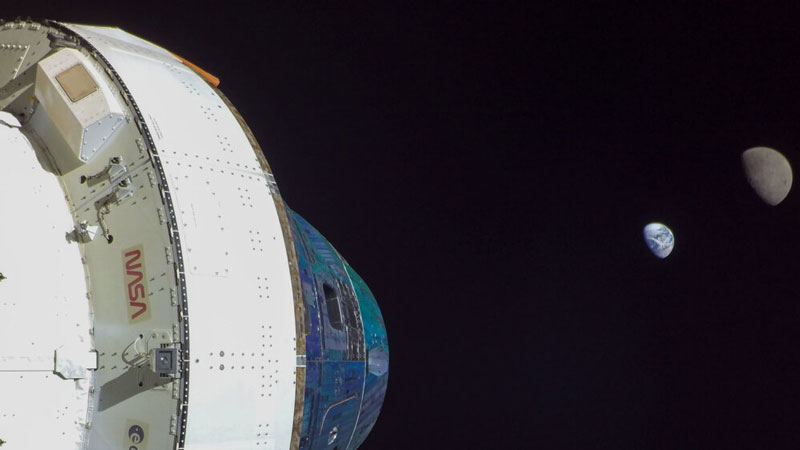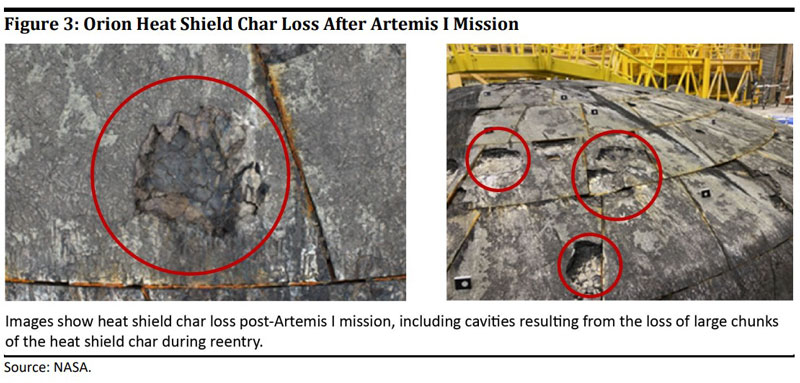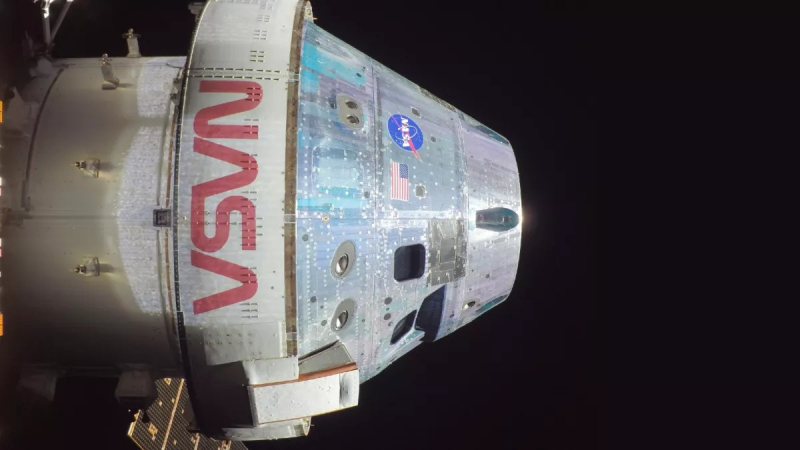About six months after Orion’s successful unmanned flight around the Moon, NASA reported that the spacecraft’s heat shield did not behave as engineers expected. Instead of uniform thinning, the screen was burnt out to the base in some places and pieces were falling off. This did not lead to a disaster, but potentially threatens future manned missions. NASA got to the bottom of the anomaly, but prefers to keep it secret.

Image source: NASA
Recently, at a thematic conference, NASA representatives were asked direct questions about what they could say about the problems with the ship’s thermal protection. “I’m not going to share this right now. When it’s released, you’ll know right away,” said Lori Glaze, acting deputy associate administrator for NASA’s Exploration Systems Mission Directorate, which oversees the Artemis program. “We have a definitive determination of the root cause of the problem.”
The Orion spacecraft flew around the Moon on an SLS rocket. The Artemis 1 mission was supposed to be his main test of reliability. The speed of entry of Orion capsules into the planet’s atmosphere upon return is almost twice as high as the speed of return of capsules from Earth orbit and reaches 40 thousand km/h. NASA has an ArcJet-Complex laboratory to study thermal loads on spacecraft heat shields, but it cannot replicate the conditions there for ships returning from interplanetary flights. The first Orion had to experience first-hand what it’s like.
Computer modeling suggested that the heat shield material—Avcoat, manufactured by Textron Systems under license from Lockheed Martin—would gradually fade away, remaining essentially a solid coating. The screen is a shield of 186 molded blocks glued to a special heat-resistant base (also one of the elements of the heat screen). Initially, the screen was supposed to be solid, but tests of the ship in low-Earth orbit showed that this would not be the best choice and it was made block.

Areas of the ship with damaged heat shield
After the descent of Orion, which flew around the Moon, into the Pacific Ocean, it turned out that in some places the blocks burned out or broke off in whole pieces to the basic base. If there were astronauts in the ship, this would not have any consequences for them. However, the screen did not behave as the engineers expected, and this forces us to look for the reasons for this behavior. If you are lucky this time, it is not a fact that you will be lucky on the next flight.
NASA claims that experts have identified the root cause of the abnormal behavior of the thermal protection. The official announcement on this matter will be delayed because additional checks are needed, which will be carried out in December. According to the source, the agency’s leadership simply does not want to voice negativity on the eve of the election of a new US president and, probably, before the change in the head of NASA that will follow. Such news is usually reported in the last weeks of the previous head of the White House in his post. Therefore, we should wait until January 2025 for the situation to become clearer.
Delaying the resolution of the issue with Orion’s thermal protection risks delaying the sending of astronauts on a flight around the Moon and the return of man to the Moon. The problem is that the ship for the crewed flight during the Artemis 2 mission has already been installed on the service module and they have begun to cover it with heat shield tiles. If this process is stopped for alterations, it will delay the flight planned for September 2025 by at least a year. The lack of a solution for the thermal protection of the ship also does not allow us to begin assembling the first stage of the SLS rocket. This is not possible due to the limited service life of solid rocket boosters, which, if the heat shield is replaced, will be unusable after delays of a year or more if installed soon.

Given the uncertainty with Orion’s heat shield and other issues with the SLS rocket, Boeing’s manufacturing process, and the High Lift Mobile Launcher, a human return to the Moon in 2026 appears to be a fantasy scenario. So is there any point in investing further in this unpromising business? In the US they are already publicly asking this question.